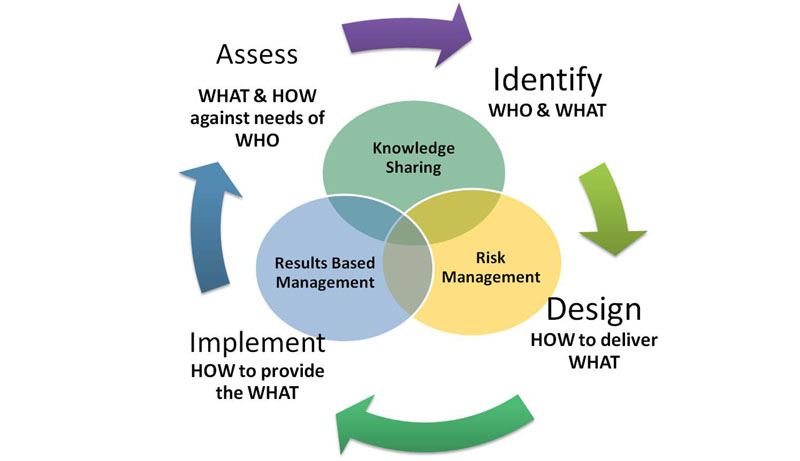During the Business Process Reengineering (BPR) exercise, UNIDO's business processes were redesigned at the high- to medium-level
Following months of extensive preparations, a comprehensive high- to medium-level BPR exercise for UNIDO’s core business/TC activities had been carried out during the months of July to September 2010. UNIDO’s business processes were reviewed and analyzed from start to end, considering all functional areas involved.
Carrying out this exercise at the high- to medium-level and prior to the ERP implementation, enabled UNIDO to reduce the overall cost and implementation time frame.
The high- to medium-level BPR exercise for UNIDO core business/technical cooperation activities involved a large number of staff members from Headquarters and the field. Supported by the ERP system, the new business processes can be carried out irrespective whether the staff member is at Headquarters or the field. The details on the new business processes for all functional areas were expanded upon during the implementation of the ERP system.
The BPR exercise was carried out in 5 levels of process modeling, mapping and documentation as indicated by the following figure:
The BPR exercise was carried out through a series of workshops and consultations, facilitated by external experts during the period of July to September 2010.
The BPR exercise developed ‘to-be’ processes and recommendations for core business/technical cooperation (TC) activities, including feedback from the field offices. The final outcome was an agreement on the nine main benefits from PCOR aligned to UNIDO’s new mission statement, a high- to medium-level ‘to-be’ processes and an identification of risks at the project level. The below figure provides a brief description of each process of the core business / technical cooperation (TC) project cycle.
- “Identify who and what” refers to who the Organization works with (i.e. beneficiaries, donors), what services these stakeholders need and whether the Organization is able to deliver these services.
- “Design how to deliver what” refers to how the Organization will deliver the requested services (what) to satisfy stakeholders’ needs.
- “Implement how to provide the what” refers to how the Organization will deliver services (what) to stakeholders.
- Finally, “Assess what and how against needs of who” deals with the assessment of what the Organization delivers, how this is delivered against the needs of stakeholders (who).
Knowledge sharing, results-based and risk management are integral elements of all stages.
The process chains for each step of the project cycle as well as the activities under each process chain were also developed during the BPR workshops. The detailed activities / step-by-step actions for each are being defined in the course of the ERP implementation together with UNIDO Functional Leads, Change Agents and the implementation partner.

